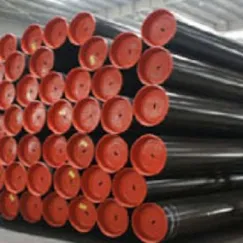-
Cangzhou Yulong Steel Co., Ltd.
-
Phone:
+86 13303177267 -
Email:
admin@ylsteelfittings.com
- English
- Arabic
- Italian
- Spanish
- Portuguese
- German
- kazakh
- Persian
- Greek
- French
- Russian
- Polish
- Thai
- Indonesian
- Vietnamese
- Zulu
- Korean
- Uzbek
- Hindi
- Serbian
- Malay
- Ukrainian
- Gujarati
- Haitian Creole
- hausa
- hawaiian
- Hebrew
- Miao
- Hungarian
- Icelandic
- igbo
- irish
- Japanese
- Javanese
- Kannada
- Khmer
- Rwandese
- Afrikaans
- Albanian
- Amharic
- Armenian
- Azerbaijani
- Basque
- Belarusian
- Bengali
- Bosnian
- Bulgarian
- Catalan
- Cebuano
- China
- China (Taiwan)
- Corsican
- Croatian
- Czech
- Danish
- Esperanto
- Estonian
- Finnish
- Frisian
- Galician
- Georgian
- Kurdish
- Kyrgyz
- Lao
- Latin
- Latvian
- Lithuanian
- Luxembourgish
- Macedonian
- Malgashi
- Malayalam
- Maltese
- Maori
- Marathi
- Mongolian
- Myanmar
- Nepali
- Norwegian
- Norwegian
- Occitan
- Pashto
- Dutch
- Punjabi
- Romanian
- Samoan
- Scottish Gaelic
- Sesotho
- Shona
- Sindhi
- Sinhala
- Slovak
- Slovenian
- Somali
- Sundanese
- Swahili
- Swedish
- Tagalog
- Tajik
- Tamil
- Tatar
- Telugu
- Turkish
- Turkmen
- Urdu
- Uighur
- Welsh
- Bantu
- Yiddish
- Yoruba

Oct . 19, 2024 07:22 Back to list
Understanding ANSI 1500 Flanges and Their Applications in Industrial Settings
Understanding ANSI 1500 Flanges An Overview
In the world of piping and fluid systems, ANSI flanges play a crucial role in connecting various components. Among these, the ANSI 1500 flange is particularly significant due to its high-pressure rating and applications across various industries. This article explores the ANSI 1500 flange, its specifications, uses, and benefits.
What is ANSI 1500 Flange?
ANSI, or the American National Standards Institute, sets the standards for various industrial components, including flanges. The number 1500 refers to the pressure rating of the flange, which indicates the maximum pressure it can withstand. The ANSI B16.5 standard defines flanges ranging from ½ inch to 24 inches for different pressure ratings, and the ANSI 1500 flange falls under this guideline.
A flange is essentially a mechanical component used to connect piping systems. It features a flat disc with holes for bolts that secure it to another component, creating a tight seal that prevents leaks. The ANSI 1500 flange is specially designed to handle pressures of up to 1500 pounds per square inch (psi), making it suitable for high-pressure applications.
Material Options
ANSI 1500 flanges are made from various materials depending on the intended application. Common materials include
1. Carbon Steel Often used for its strength and durability, carbon steel flanges are ideal for general piping systems. 2. Stainless Steel Known for its corrosion resistance, stainless steel is used in environments where chemicals or moisture may cause rusting. 3. Alloy Steel These flanges handle extreme temperatures and pressures, making them suitable for oil and gas applications. 4. Plastic In certain low-pressure situations or corrosive environments, plastic flanges can be used for a lighter, more resistant alternative.
Flange Types
ANSI 1500 flanges come in several types, including
ansi 1500 flange

- Slip-On Flanges These are slipped over the pipe and welded in place. They are easier to install and are often used for lower-pressure applications. - Weld Neck Flanges Featuring a long tapered hub, these flanges provide additional strength, making them suitable for high-pressure applications like ANSI 1500. - Blind Flanges These are used to close the end of a piping system, preventing any flow and allowing for maintenance. - Socket Weld Flanges Designed for high-pressure systems, socket weld flanges are inserted into the pipe and then welded around the joint.
Applications
The ANSI 1500 flange is widely used across multiple industries, including
- Oil and Gas The oil and gas industry relies on these flanges in pipelines that transport crude oil and gas under high pressures. - Chemical Processing In chemical plants, ANSI 1500 flanges resist corrosion, ensuring that hazardous materials are safely contained. - Power Generation Power plants utilize ANSI 1500 flanges in steam piping systems, where high pressure is critical for efficiency. - Water Treatment In water treatment facilities, these flanges are used in high-pressure water distribution systems.
Benefits of ANSI 1500 Flanges
One of the main benefits of using ANSI 1500 flanges is their superior pressure handling capability. They provide reliable sealing and reduce the risk of leaks, which is critical in high-pressure environments where safety is a concern. Additionally, the wide range of materials and types allows for customization based on specific application needs, enhancing versatility.
Another advantage is the ease of installation and maintenance. Many flanges can be easily bolted and unbolted, allowing for quick access to pipes for repairs or modifications. This flexibility can save both time and labor costs during maintenance operations.
Conclusion
In summary, ANSI 1500 flanges are essential components in high-pressure piping systems across various industries. Their ability to withstand elevated pressures and their versatility in application make them a popular choice among engineers and project managers. Understanding the specifications, types, and benefits of ANSI 1500 flanges can help stakeholders make informed decisions that ensure safety and reliability in their systems. As industries continue to evolve, the importance of robust and dependable connections like those provided by ANSI 1500 flanges cannot be overstated.
Latest news
-
ANSI 150P SS304 SO FLANGE
NewsFeb.14,2025
-
ASTM A333GR6 STEEL PIPE
NewsJan.20,2025
-
ANSI B16.5 WELDING NECK FLANGE
NewsJan.15,2026
-
ANSI B16.5 SLIP-ON FLANGE
NewsApr.19,2024
-
SABS 1123 FLANGE
NewsJan.15,2025
-
DIN86044 PLATE FLANGE
NewsApr.19,2024
-
DIN2527 BLIND FLANGE
NewsApr.12,2024
-
JIS B2311 Butt-Welding Fittings LR/SR 45°/90° /180°Seamless/Weld
NewsApr.23,2024











